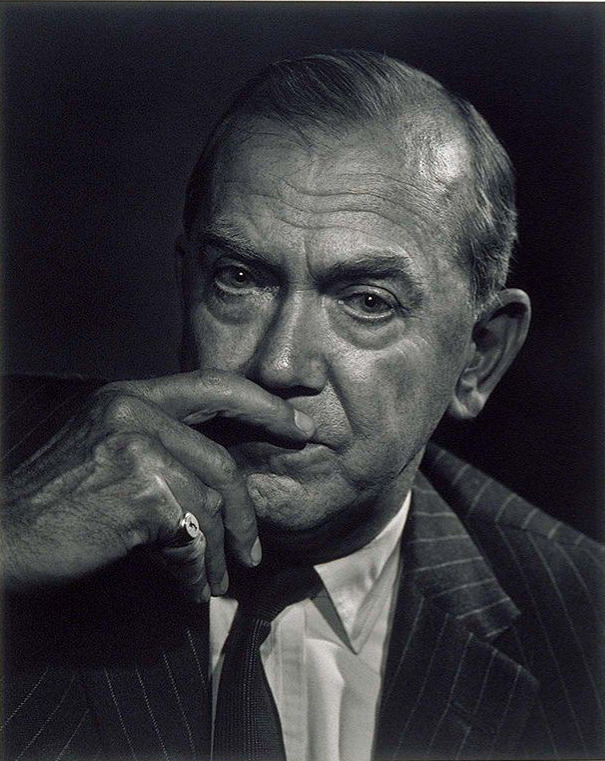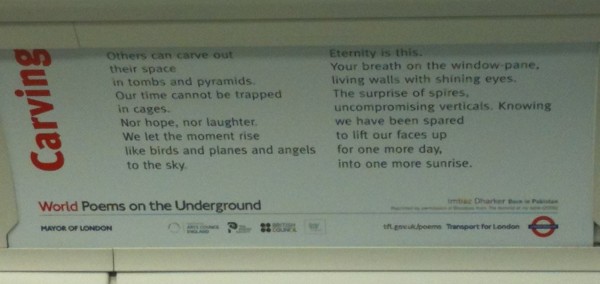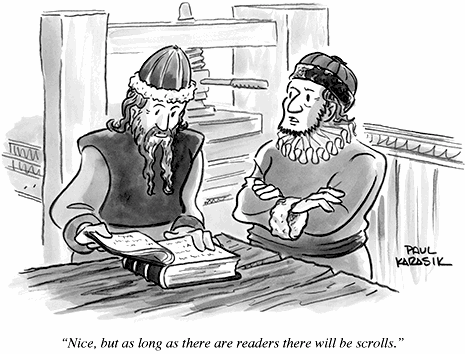
Art
New York, 1908
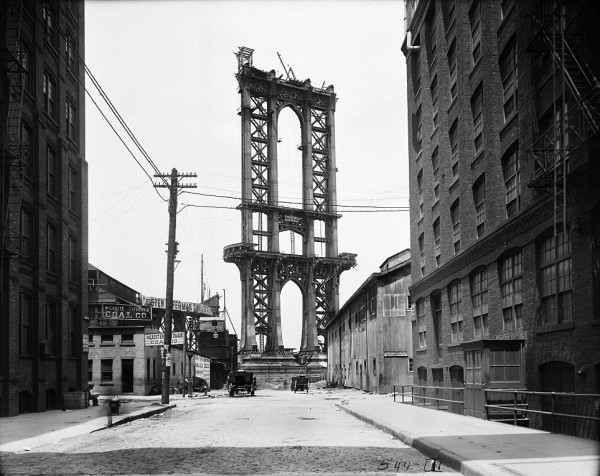
The Manhattan bridge under construction, seen from Washington Street, June 5, 1908. The bridge wouldn’t open for another 18 months and wouldn’t be completed for another four years. More newly released historical photos of New York here.
Graham Greene by Yousuf Karsh
Ex Libris
 I’ve just received a new shipment of these bookplates. They are for readers who would like a signed book but can’t make it to a book signing. If you’d like one, just email me with your address and, if you want a personal inscription, what you would like it to say. There is no charge. It’s just a way of saying “thank you” to readers. (Click the image to view full sized.)
I’ve just received a new shipment of these bookplates. They are for readers who would like a signed book but can’t make it to a book signing. If you’d like one, just email me with your address and, if you want a personal inscription, what you would like it to say. There is no charge. It’s just a way of saying “thank you” to readers. (Click the image to view full sized.)
A little background on the design. The woodcut illustration is by the artist Rockwell Kent. It was originally commissioned by the Antioch Bookplate Company for a mass-market bookplate in the 1950s. Those Antioch bookplates used to be very common. You could find them at any bookstore. They were tasteful, inexpensive and, for the genteel middle class, a little aspirational. (My mom had them.)
Kent was a prolific bookplate designer. Most of his work was for friends and private clients, though, like the plate on the left. (Source. More examples here and here. There is even a book on Kent’s bookplates.) The series he designed for Antioch made it possible for everyone to have a Rockwell Kent bookplate.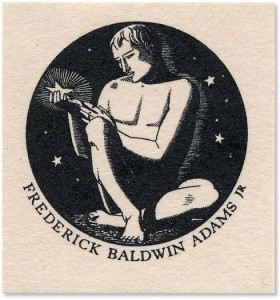
Antioch stopped printing bookplates a few years ago, but Karen Gardner has continued the business under the name Bookplate Ink, where you can still get many of the old Rockwell Kent designs.
Personally, I love Kent’s art. So when it came time to order a bookplate for my readers, I asked Karen if she would modify one of Kent’s designs to make a little more space for a signature and inscription, since the original design left only enough space for the owner’s name. I cribbed the “compliments of” line from a similar bookplate offered by Alain de Botton, and the result is what you see above.
I admit it’s a little loony to spend so much time thinking about bookplates. In the age of ebooks, soon there may be nothing to stick them on. All the more reason to enjoy them now.
“There is only the trying”
So here I am, in the middle way, having had twenty years—
Twenty years largely wasted, the years of l’entre deux guerres
Trying to learn to use words, and every attempt
Is a wholly new start, and a different kind of failure
Because one has only learnt to get the better of words
For the thing one no longer has to say, or the way in which
One is no longer disposed to say it. And so each venture
Is a new beginning, a raid on the inarticulate
With shabby equipment always deteriorating
In the general mess of imprecision of feeling,
Undisciplined squads of emotion.
And what there is to conquer
By strength and submission, has already been discovered
Once or twice, or several times, by men whom one cannot hope
To emulate—but there is no competition—
There is only the fight to recover what has been lost
And found and lost again and again: and now, under conditions
That seem unpropitious. But perhaps neither gain nor loss.
For us, there is only the trying. The rest is not our business.
— T. S. Eliot: “East Coker” from Four Quartets
Imtiaz Dharker: Carving
“Carving”
Others can carve out
their space
in tombs and pyramids.
Our time cannot be trapped
in cages.
Nor hope, nor laughter.
We let the moment rise
like birds and planes and angels
to the sky.
Eternity is this.
Your breath on the window pane,
living walls with shining eyes.
The surprise of spires,
uncompromising verticals. Knowing
we have been spared
to lift our faces up
for one more day,
into one more sunrise.
— by Imtiaz Dharker
Noticed this poem on the London Tube last week, on one of the “Poems on the Underground” posters.
From: Imtiaz Dharker, The Terrorist at My Table (Bloodaxe Books, 2006).
Marilyn
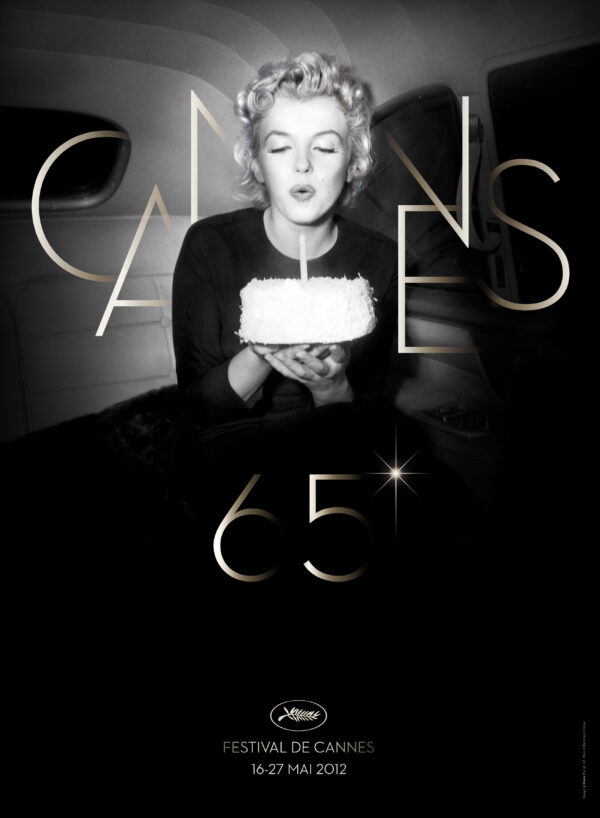
The official poster for the 65th Cannes Film Festival.
Our golden age of reading
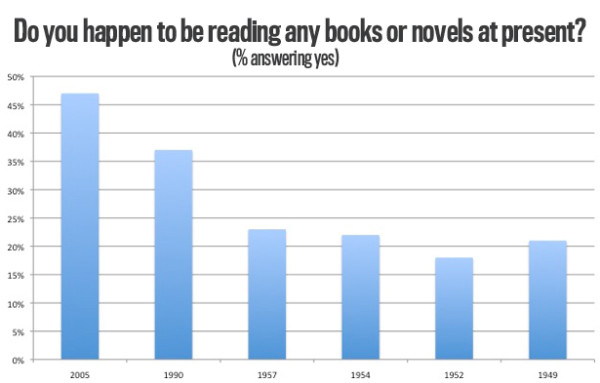
Alexis Madrigal: “our collective memory of the past is astoundingly inaccurate. Not only has the number of people reading not declined precipitously, it’s actually gone up since the perceived golden age of American letters.”
